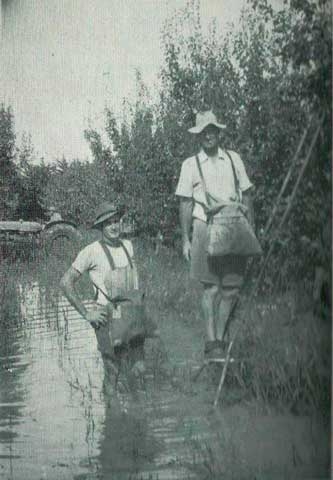By 1946 the peach and pear trees at the Station were well established and were full-bearing.
Research on fruit trees takes off (cont from last issue)
It was not until 1948 that large trials on both management of peaches, and fertilisers for pears were established.
Canning peach selections
By 1952, five canning peaches were selected from the many seedlings and crosses made since 1939 and released for commercial planting. A competition among the staff to name the varieties was won by John Wallbrink, who received a bottle of wine. He named the varieties Tatura Dawn, Tatura Sunrise, Tatura Noon, Tatura Aurora and Tatura Sunset. Funds were also made available for staff quarters to house up to 12 staff; a general store; and a modest workshop for the Station’s mechanic, Jim Muir.In 1956 the staff quarters and attached cook’s flat were opened and accommodated. The staff quarters were not insulated. It was hot in summer and cold in winter. Roaring fires were made in the lounge room fire-place with wood from broken fruit cases and peach trees killed by the flood of 1955. The staff quarters closed in 1974 to make way for new buildings.
Flood, waterlogging & tree deaths
The 1954–1955 season was a disaster for fruit growers with peach and apricot trees in the Goulburn and Murray Valley. An exceptionally wet spring was followed by serious widespread rain. In February 1955, about 288 mm of rain fell in five days. Yields of both peaches and pears suffered, but far worse was the subsequent death of about 450,000 peach trees (1500 ha) and 86,000 apricot trees (290 ha) due to prolonged waterlogged soil.Because of all the dead trees at the Station, several peach experiments had to be terminated. A dinghy was used to harvest pears. Fruit was picked in lug boxes (bins were not yet invented).
New direction
The flood and the damage to the fruit industry were the impetus for a new direction in the management of trees, soil and irrigation. Such a disaster must never happen again. The research that followed in the next 30 years, made the Goulburn Valley one of the most productive horticultural areas in the world.
See this article in Tree Fruit March 2019






















